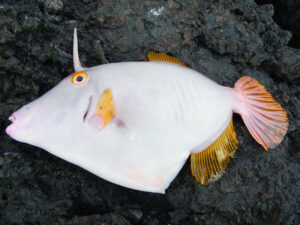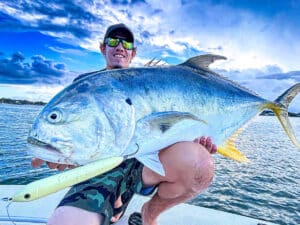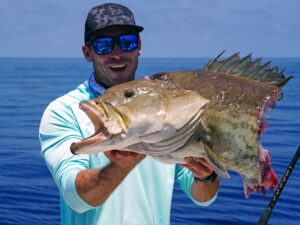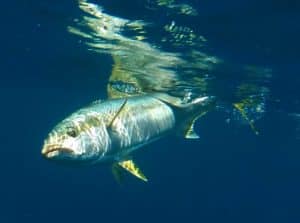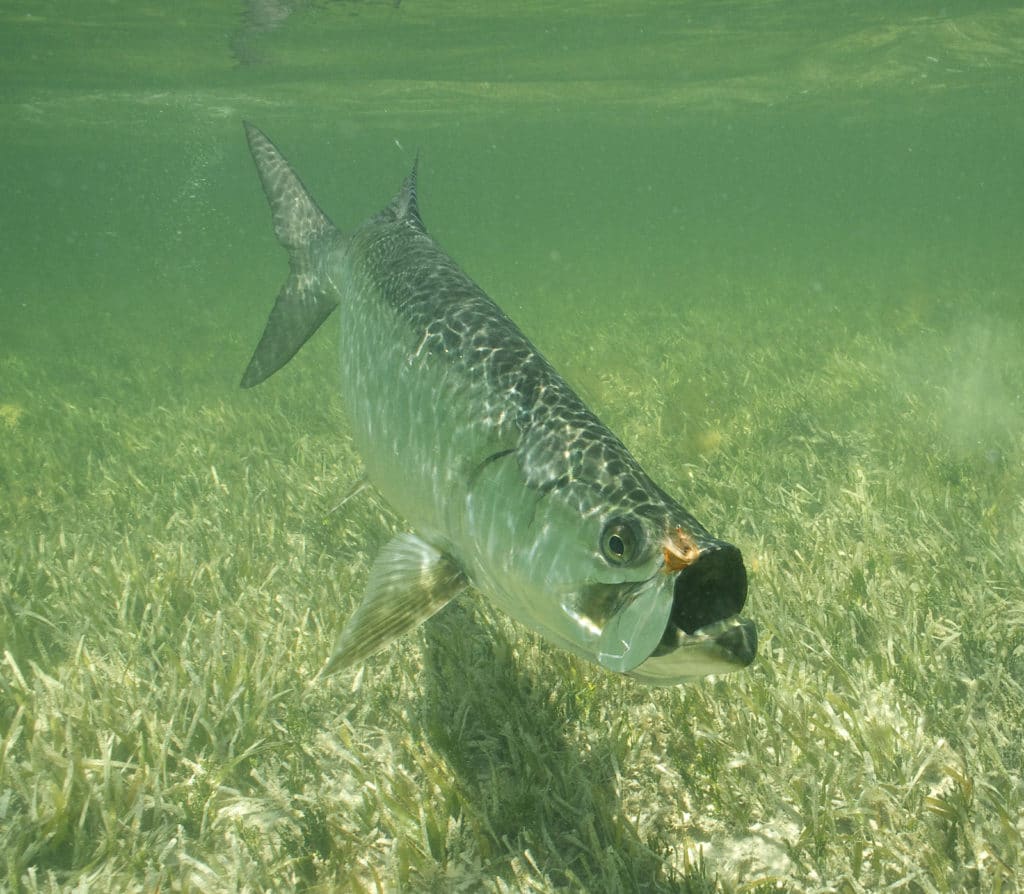
Most anglers would agree that of all styles of fishing, catching prey on fly requires the most skill. And with any form of sight-fishing, it’s a far cry more challenging to spot fish and make precise casts as opposed to blind-casting or soaking a bait.
It takes considerable patience to stand on the bow of a skiff — sometimes for hours or even all day — in search of a big tarpon that might weigh 150 pounds or more. But the wait is forgotten in the pandemonium of a fish gobbling your fly and then testing all your angling skills and stamina.
Until the 1940s, no one believed that tarpon could be bested on fly gear, particularly big bruisers. Since then, however, a faithful horde of saltwater fly fishers pioneered and perfected the techniques for catching tarpon. Some names became synonymous with fly-fishing-tarpon excellence and world-record catches: Stu Apte, Billy Pate, Tom Evans, Lefty Kreh, Al Pflueger, Bob Stearns, Joe Brooks, Andy Mill and baseball legend Ted Williams. Apte and Kreh even had stamps created in their honor by the U.S. Postal Service.
As fly rods and reels for big game fish like tarpon came on the market and spurred an industry, fishing guides specializing in fly-fishing charters emerged. Even on the high seas, all species became fair game on fly, but few captured hearts and souls of fly-rodders more than tarpon.
How to Catch Tarpon on Fly
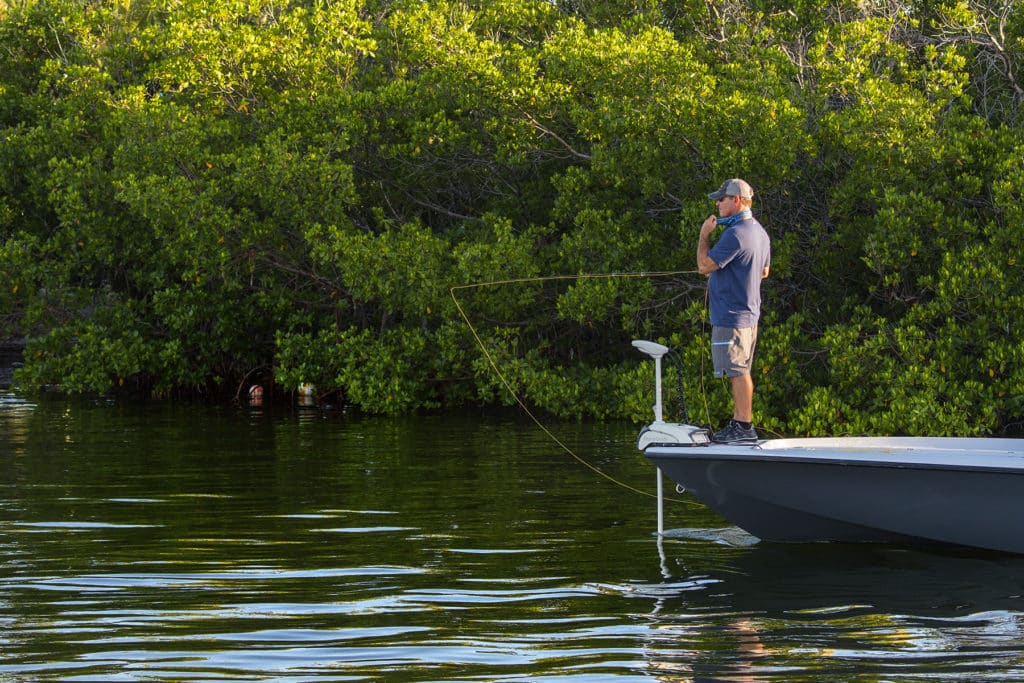
Sight-fishing is unquestionably the most exciting way to pursue Megalops atlanticus — also known as silver kings or poons. This usually involves two people on a skiff — the angler in the bow and a buddy or guide atop a platform over the engine, quietly poling as eyes scan for the presence of silver kings.
Positioning for the cast is an art unto itself because the slightest noise or appearance of the skiff, guide or angler can spook a tarpon. When a suitably sized fish is spotted, the boat must be placed into an optimal position to allow the angler standing on the bow to cast a fly in front of the target without the back casts hitting the poler or pole.
The cast must be precise. If the fly or fly line lands too close to the tarpon, it will usually exit stage right. Too short a cast or too far behind the poon, and you must retrieve the fly and recast.
If a cast is such that it lands in front of the tarpon, it’s hoped those big eyes see the fly. You must retrieve the fly in what’s known as strips — pulling the line with one hand onto the spool in short lengths so the fly mimics the swimming action of something edible.
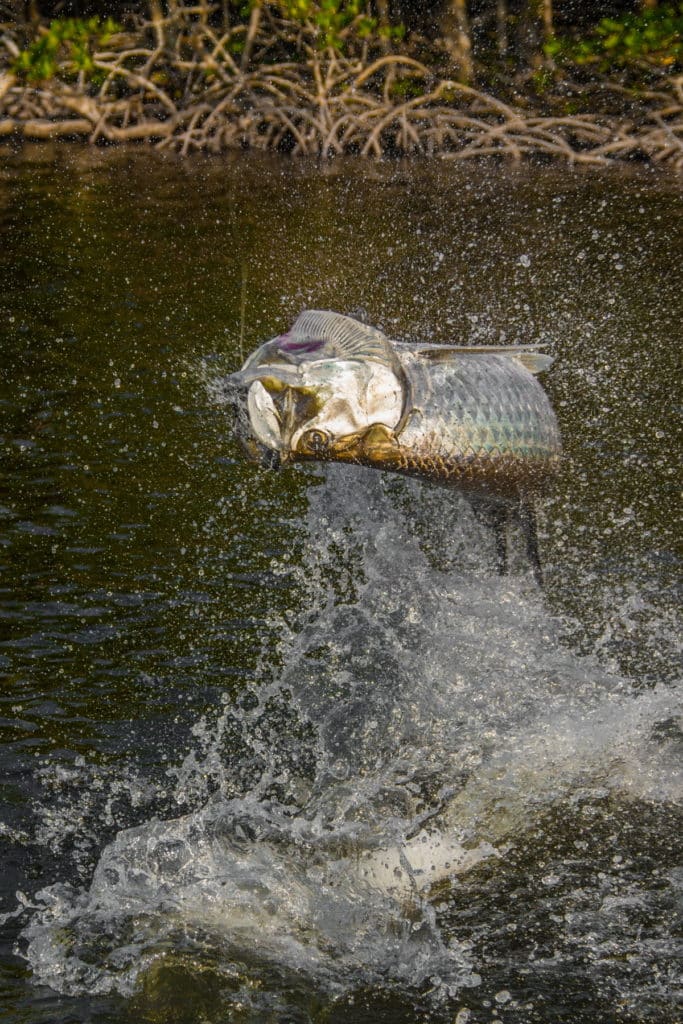
You can also blind-cast a fly in likely tarpon locations or when you see them rolling in an area. In locations with deep water, a sinking fly line is often preferred over a floating line, and the opposite holds true in shallow water.
Fly-fishing for tarpon, as with all species, requires gear that matches the size of fish you’re expecting to combat. The reel contains a variety of lines: backing, fly line, leader, tippet and trace. Tippet size stipulates the line class you’re using, which ranges from 2 to 20 pounds. (See “It’s in the Book,” below)
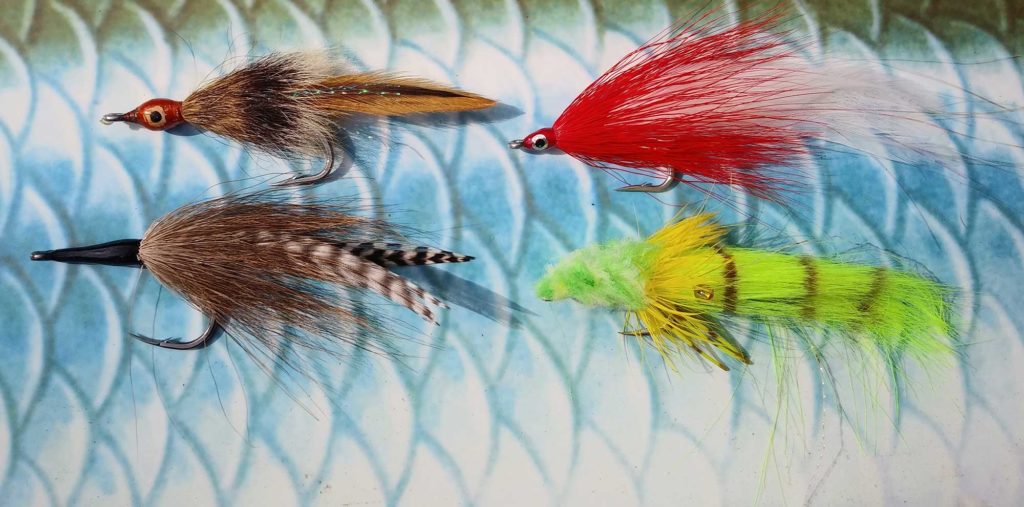
Also referred to as patterns, flies specifically for tarpon vary in myriad materials and colors. Most tarpon experts tie their own flies and eschew catching a prized poon using a pattern someone else designed. Nonetheless, many fly fishers (including this one) choose to buy patterns online or at a fly shop and carry with them a selection of different sizes, shapes and colors to match what tarpon may be eating at any given time and place.
Many types of flies have proven to be successful for silver kings, and most fly anglers seem to agree that the presentation of the fly is more important than the pattern. Put something on the table that looks yummy and a poon is likely to munch it. In recent years, small patterns with 2/0 hooks are popular because lighter flies are easier to cast and even jumbo tarpon suck them down like hors d’oeuvres.
Nevertheless, most tarpon fly-rodders have faves. A few of mine:
Apte Too — Stu Apte, who over the years has held at least 44 saltwater records on fly, developed this pattern and others bearing his name while working as a fishing guide in the Florida Keys. Says Apte, “The size, shape and color of a fly will change based on water clarity and depth, wind and bottom composure, to name just a few conditions.”
Lefty’s Deceiver — A streamer pattern designed by Lefty Kreh, originally for striped bass and later adapted to other species such as tarpon. Originally all white, this fly has undergone many variations in color.
Tarpon Toad — The history of the evolution of this pattern includes pioneering names such as Del Brown, Harry Spear, Gary Merriman, Tim Hoover and Andy Mill. It’s a deadly fly for tarpon that looks like, and swims like, a small toadfish.
Seaducer — Designed as far back as the 1940s by Homer Rhodes, it underwent a more marketable name change. This streamer’s most popular colors include all black, yellow and chartreuse, and red and white.
Cockroach — A versatile fly in a variety of water conditions with barred feathers in grizzly-and-tan that emulates shrimp and several small baitfish. It strips nicely through the water and easy to cast with a 1/0 hook. Other color combos work well too.
I’m an admitted addict when it comes to fly fishing for tarpon. The oversize eyes, svelte physique, silver scales resembling chainmail, a mouth sculpted for vacuuming copious table d’hotes, and a stallion-like fighting spirit all add up to my vision of a mighty warrior.
It’s in the Book The International Game Fish Association is the arbiter and keeper of world records on freshwater and saltwater gamefish for men, women, and junior and small-fry categories. Line class records range in pounds: 2, 4, 6, 8, 12, 16, 20, 30, 50, 80 and 130.
The all-tackle record for tarpon was set on March 20, 2003, by Max Domecq (guided by a young Patrick Sebile). He bested a 286-pound, 9-ounce behemoth off Rubane, Guinea-Bissau off West Africa on 80-pound tackle. Many line class world records were set in the 1990s off West Africa, in particular Sierra Leone. During and since then, however, that country underwent civil war and a series of coup d’etats, and locals began feeding off the tarpon population.
In the U.S., all line class world records have been set in the Florida Keys, the largest a 243-pound tarpon caught on 20-pound-test line in Key West on February 17, 1975, by Gus Bell.
On fly tackle, all world records are in Florida, with nine of the 14 tippet classes set in the Keys. The standing world record for tarpon on fly is 202 pounds, 8 ounces, by James Holland, who did it on 20-pound tippet off Chassahowitzka on May 11, 2001.

